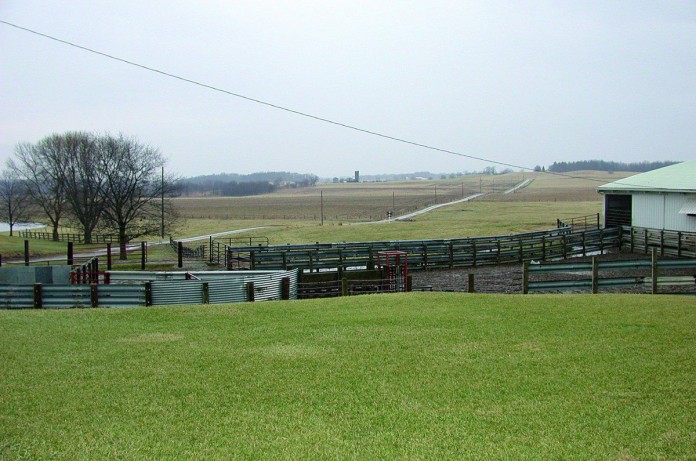COLUMBUS — While he stopped short of a full endorsement, Ohio Tax Commissioner Joe Testa this week said the Ohio Farm Bureau Federation’s recommendations to modernize the state’s Current Agricultural Use Value, or CAUV, property tax formula have a good deal of merit.
“There is a lot (in the recommended changes) that I feel would not be troubling to us,” Testa said.
The OFBF recommended four changes to the CAUV formula, noting in a news release that the changes “can be accomplished through administrative action and will not require legislation.”
The recommendations were sent to Testa and members of the Ohio General Assembly Nov. 13.
Testa said that while he is still reviewing the recommendations, some — such as amending the current debt ratio to better reflect a typical farmland financing arrangement, and delaying the release of annual values until May when updated budgets and yield, price, and rotation data become available — could indeed to implemented without legislative action, so long as it was determined that there would be no adverse effect on the financial industry or the work of county auditor.
Fast track
Testa said his office is seeking input from members of the CAUV agricultural advisory committee before the end of the year to allow for implementation by 2015, which would affect taxes paid in 2016.
The advisory committee, which includes representatives from the Ohio Farm Bureau, the Farmers Union, the Grange, the Ohio State University Department of Agricultural Economics, and a representative from the Ohio County Auditor’s Association, normally meets in February.
Testa said both he and OFBF members are supportive of the CAUV formula itself.
“All the CAUV is doing is making a fair assessment of market value using income,” he said. “The whole CAUV process is designed to take out short-term market changes each year and maintain greater stability. So even if we make these (OFBF recommended) changes, it is based on a seven-year rolling average. So you would have to see significant changes up or down for multiple years in a row before it would affect the formula.”
What happened
The CAUV is a differential real estate tax assessment program that lets farmland owners have their parcels taxed according to their value in agriculture, rather than full market value. It applies to landowners with 10 or more acres devoted to commercial agricultural use or, if below the acreage threshold, farms that produce an average yearly gross income of at least $2,500.
The CAUV was passed into law by the Ohio General Assembly in April 1974.
In the wake of property tax estimates this year reflecting as much as a 200 to 300 percent increase since the last triennial update, the OFBF, along with a variety of state and local lawmakers and other stakeholders, has redoubled its efforts to seek adjustments to the formula.
“We have been looking for ways to make the CAUV program stronger and more accurate,” said Leah Curtis, OFBF director of agricultural law. “We want to tie it to what is happening (in the market) today and this year is a little different.”
The current CAUV formula, set up in the Ohio administrative code, is based on five factors: yield, crop price, an established crop rotation pattern, the subtraction of production costs, and (the resulting) net income per acre of a parcel of a particular soil type.
These numbers are then divided by the CAUV capitalization rate — the cost of the rate of return a purchaser would invest — which is currently 7 percent.
Market fluctuations and increased commodity prices over the past decade have led to a steady decline in the capitalization rate, resulting in higher property values.
More urgency
With commodity prices, particularly corn, taking a nosedive in the past year, the increased property values have left many farmers struggling under the very program designed for their benefit.
The state is also in the midst of a triennial reappraisal schedule in which farmers in 41 counties — half the state — are being affected.
“That has heightened the awareness,” Curtis said. “We’ve had the discussion over the past couple years, but since so many people are now being affected, there has been a movement to look at it more closely.”
She said that given the changing nature of agriculture itself, amending the capitalization rate to more accurately reflect current market realities is not unheard of.
“The CAUV has been a great program for 40 years, but we will continue to look at things and make suggestions,” Curtis said. “These initial proposals, we feel, will be helpful long term.”












I do think cauv formula needs overhauled but it should have been looked at in years past not just now when the big farm bureau or nfo backed grain farms are hurting with the high land taxes. The non-grain farms have been hurting for the past 5-8 years with the steady increase in land taxes but without the boom in the product we make (dairy , beef , or any non-grain farms ). My personal farm has gone from $2800+ a half year in 2008 too 4800+ in 2015. I would like to see or be involve with changes that need to be made. My father was an involved member of the nfo when milk prices needed improved in 1960s. Don’t get the wrong ideas I do applaud the work being done.